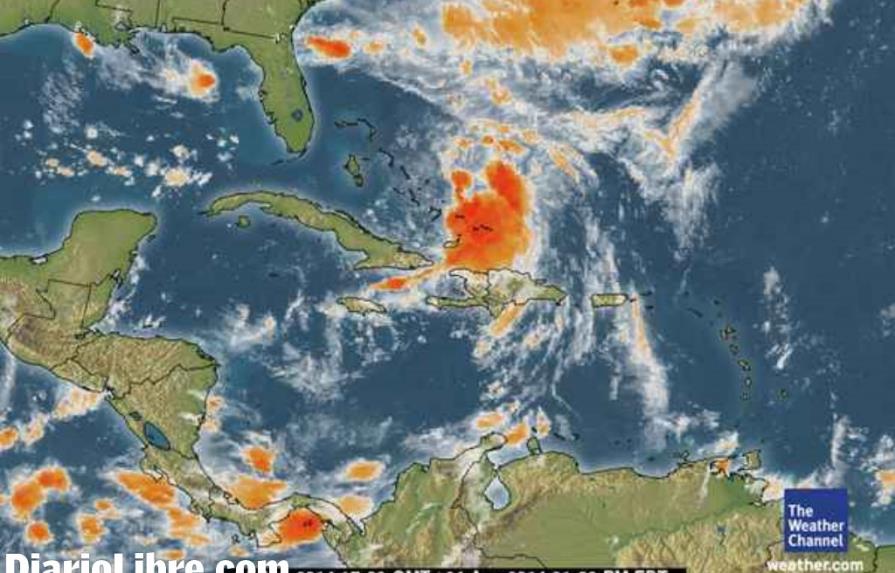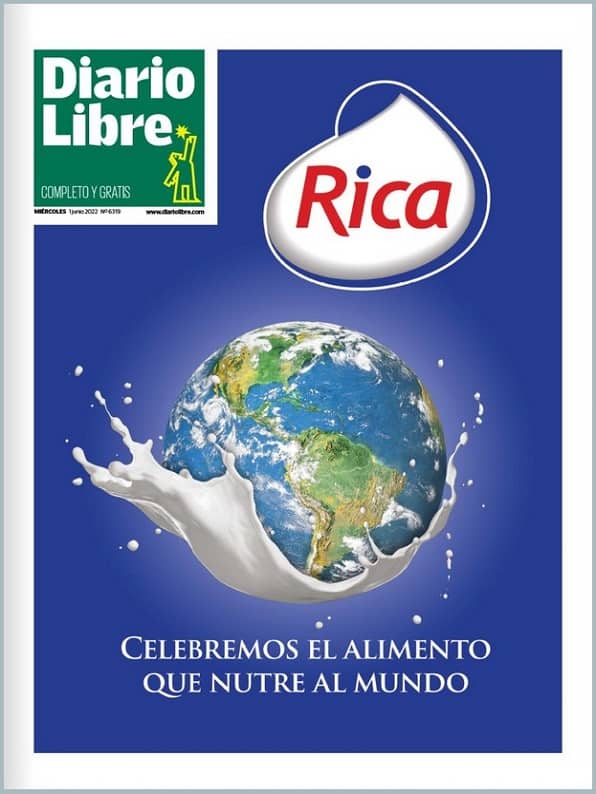Rains will continue today; there are 3600 displaced persons
Public Works inspects places affected by the storm

SANTO DOMINGO. Tropical storm Cristobal is moving away from the national territory but it's cloud cover will continue causing rains during today around the country. As a result of the rains there are 3603 persons displaced as a result of the flooding. In this sense, the Center of Emergency Operations (COE) maintains its alert against flooding and landslides.
The province of San Pedro de Macoris, one of the most affected by the passage of the storm, is still under a red alert, while a yellow alert is in place for El Seibo, Hato Mayor, the National District, Greater Santo Domingo and Duarte, specifically in the Lower Yuna Valley. In addition, there are 12 other provinces on a green alert.
It is expected that tomorrow there will be a reduction of the rains although because of the unstable conditions of the climate that could be scattered showers in some parts of the country, according to the National Office of Meteorology.
The tropical storm Cristobal, which yesterday was located near the Bahama Islands, with winds of 75 km/h, isolated 23 communities, affected 606 houses, and hospital, two bridges and an electric system as it passed by the country, according to the last bulletin by the COE.
As a result of the rains, Alfonso Astacio, who tried to cross the Naranjo River in his pickup truck while the river was at the flood stage, has not been found. However, the director of the COE, Juan Manuel Mendez, insists that this cannot be attributed to the storm, but rather to the "disobedience" of the citizen who in spite of the warnings, tried to cross the river. Mendez said nonetheless that the agencies of public assistance are trying to find this person.
In the case of Chichi Reyes, who had been found dead in his house in Hato Mayor, he said that the forensic investigations determined that the death was due to a heart attack and not by drowning.
Public Works inspections
The Minister of Public Works and now is that person out from this entity will go to the places affected by the rains in order to evaluate the situation, above all in the area of El Seibo and Hato Mayor where the approaches to two bridges were affected by rain water.
This ministry has crews working on the cleanup and removal of obstacles on the highways which were affected by the storm in different places, according to reports from engineer Ramon Pepin, the liaison between Public Works and COE.
The Seibo River is still overflowing its banks, which maintains sectors such as Arroyo Grande and La Cuchilla isolated; the floodwaters of the Soco River are also flooding, making communication with the municipality of Ramon Santana impossible.
There are also floodwaters from rivers such as the Higuamo, Casui and Magua, which have got off communities such as Yerba Buena, Las Claras, Villita, Capote, La Lima and Monte Coca.
The Ozama River is another of those that is increased its flow, making communication to Batey Mata los Indios, in Monte Plata, very difficult and it is partly cut off.
According to Mendez Garcia, the different agencies that make up the COE have been activated in order to continue assisting the persons affected by the storm.
He pointed out in addition, that the Metropolitan Office of Bus Services (OMSA) put all of its units at his disposition in order to facilitate the operation.
Provinces with rainstorms
According to the National Office of Meteorology, the rains will be more frequent in provinces such as La Altagracia, La Romana, San Pedro, El Seibo, Hato Mayor, Monte Plata, Samaná, Espaillat, Hermanas Mirabal, María Trinidad Sánchez, Duarte, Sánchez Ramírez, Santiago, La Vega, Puerto Plata, Monseñor Nouel, San Cristóbal, San José de Ocoa, Azua and Barahona.
The province of San Pedro de Macoris, one of the most affected by the passage of the storm, is still under a red alert, while a yellow alert is in place for El Seibo, Hato Mayor, the National District, Greater Santo Domingo and Duarte, specifically in the Lower Yuna Valley. In addition, there are 12 other provinces on a green alert.
It is expected that tomorrow there will be a reduction of the rains although because of the unstable conditions of the climate that could be scattered showers in some parts of the country, according to the National Office of Meteorology.
The tropical storm Cristobal, which yesterday was located near the Bahama Islands, with winds of 75 km/h, isolated 23 communities, affected 606 houses, and hospital, two bridges and an electric system as it passed by the country, according to the last bulletin by the COE.
As a result of the rains, Alfonso Astacio, who tried to cross the Naranjo River in his pickup truck while the river was at the flood stage, has not been found. However, the director of the COE, Juan Manuel Mendez, insists that this cannot be attributed to the storm, but rather to the "disobedience" of the citizen who in spite of the warnings, tried to cross the river. Mendez said nonetheless that the agencies of public assistance are trying to find this person.
In the case of Chichi Reyes, who had been found dead in his house in Hato Mayor, he said that the forensic investigations determined that the death was due to a heart attack and not by drowning.
Public Works inspections
The Minister of Public Works and now is that person out from this entity will go to the places affected by the rains in order to evaluate the situation, above all in the area of El Seibo and Hato Mayor where the approaches to two bridges were affected by rain water.
This ministry has crews working on the cleanup and removal of obstacles on the highways which were affected by the storm in different places, according to reports from engineer Ramon Pepin, the liaison between Public Works and COE.
The Seibo River is still overflowing its banks, which maintains sectors such as Arroyo Grande and La Cuchilla isolated; the floodwaters of the Soco River are also flooding, making communication with the municipality of Ramon Santana impossible.
There are also floodwaters from rivers such as the Higuamo, Casui and Magua, which have got off communities such as Yerba Buena, Las Claras, Villita, Capote, La Lima and Monte Coca.
The Ozama River is another of those that is increased its flow, making communication to Batey Mata los Indios, in Monte Plata, very difficult and it is partly cut off.
According to Mendez Garcia, the different agencies that make up the COE have been activated in order to continue assisting the persons affected by the storm.
He pointed out in addition, that the Metropolitan Office of Bus Services (OMSA) put all of its units at his disposition in order to facilitate the operation.
Provinces with rainstorms
According to the National Office of Meteorology, the rains will be more frequent in provinces such as La Altagracia, La Romana, San Pedro, El Seibo, Hato Mayor, Monte Plata, Samaná, Espaillat, Hermanas Mirabal, María Trinidad Sánchez, Duarte, Sánchez Ramírez, Santiago, La Vega, Puerto Plata, Monseñor Nouel, San Cristóbal, San José de Ocoa, Azua and Barahona.


 Tania Molina
Tania Molina
 Tania Molina
Tania Molina